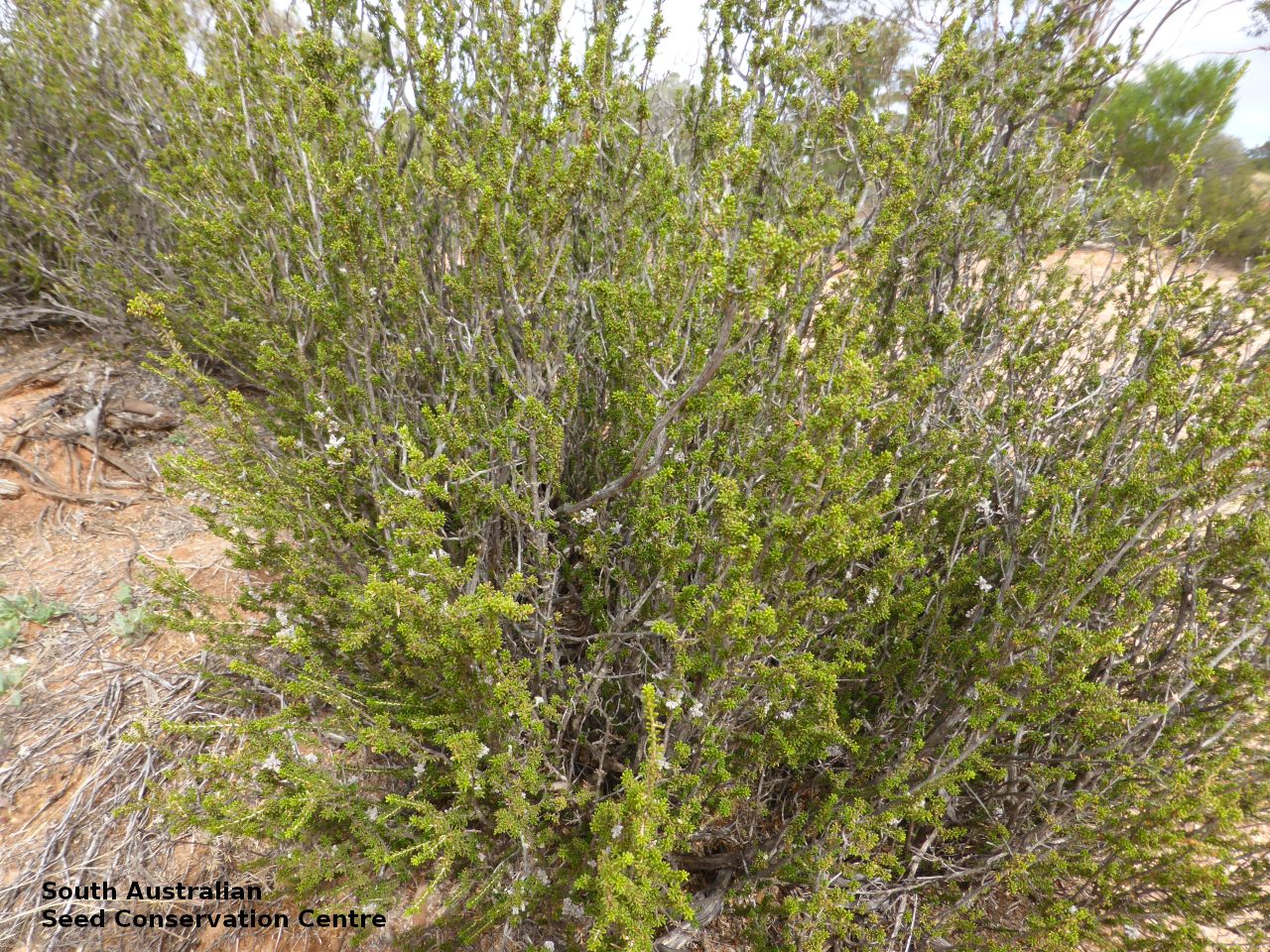
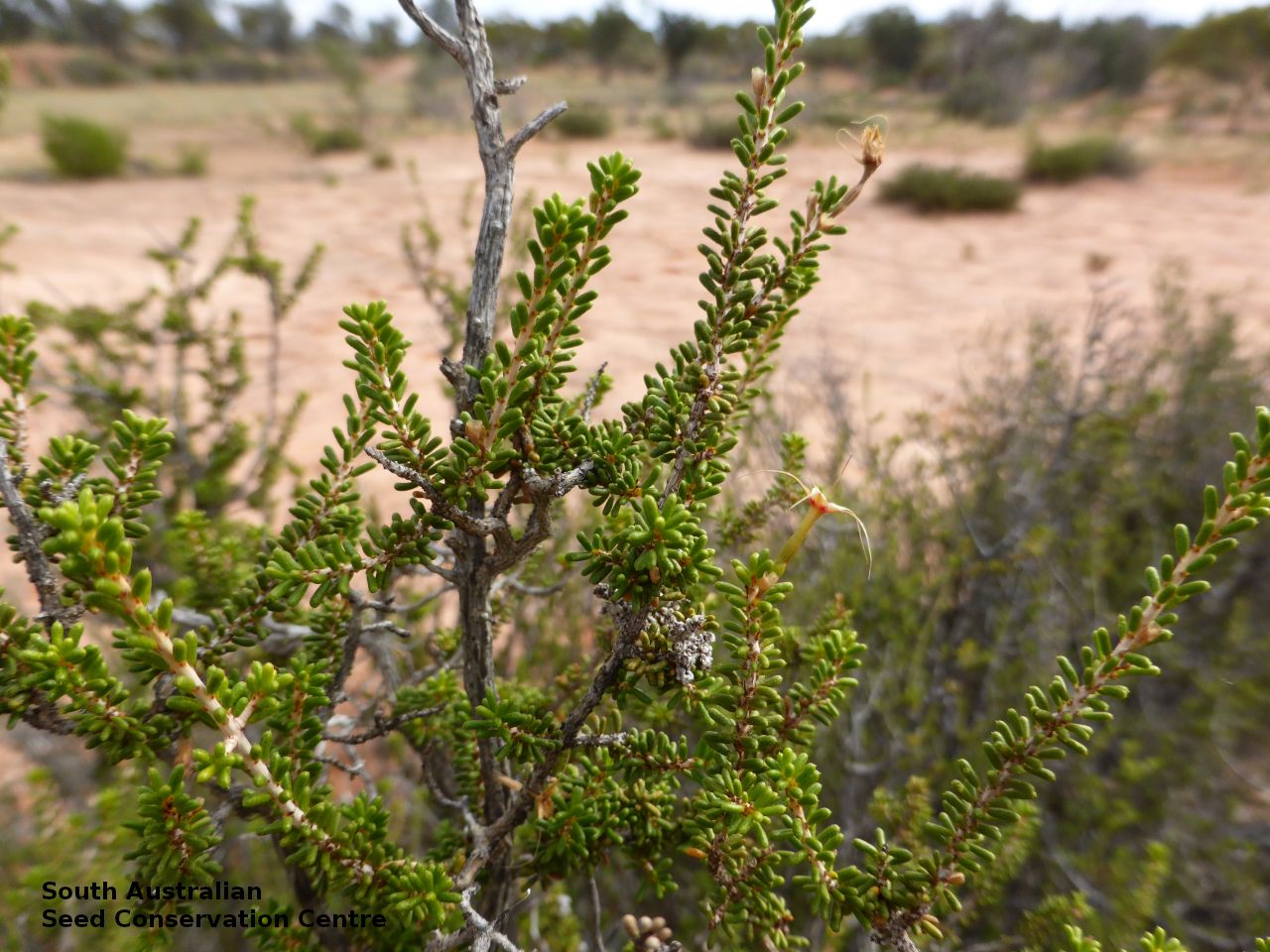
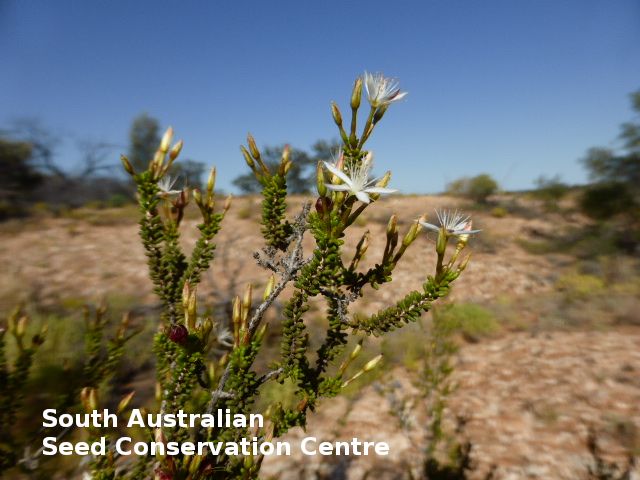
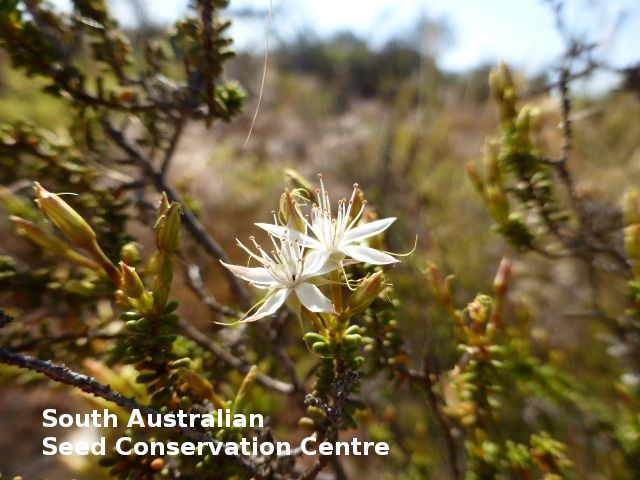
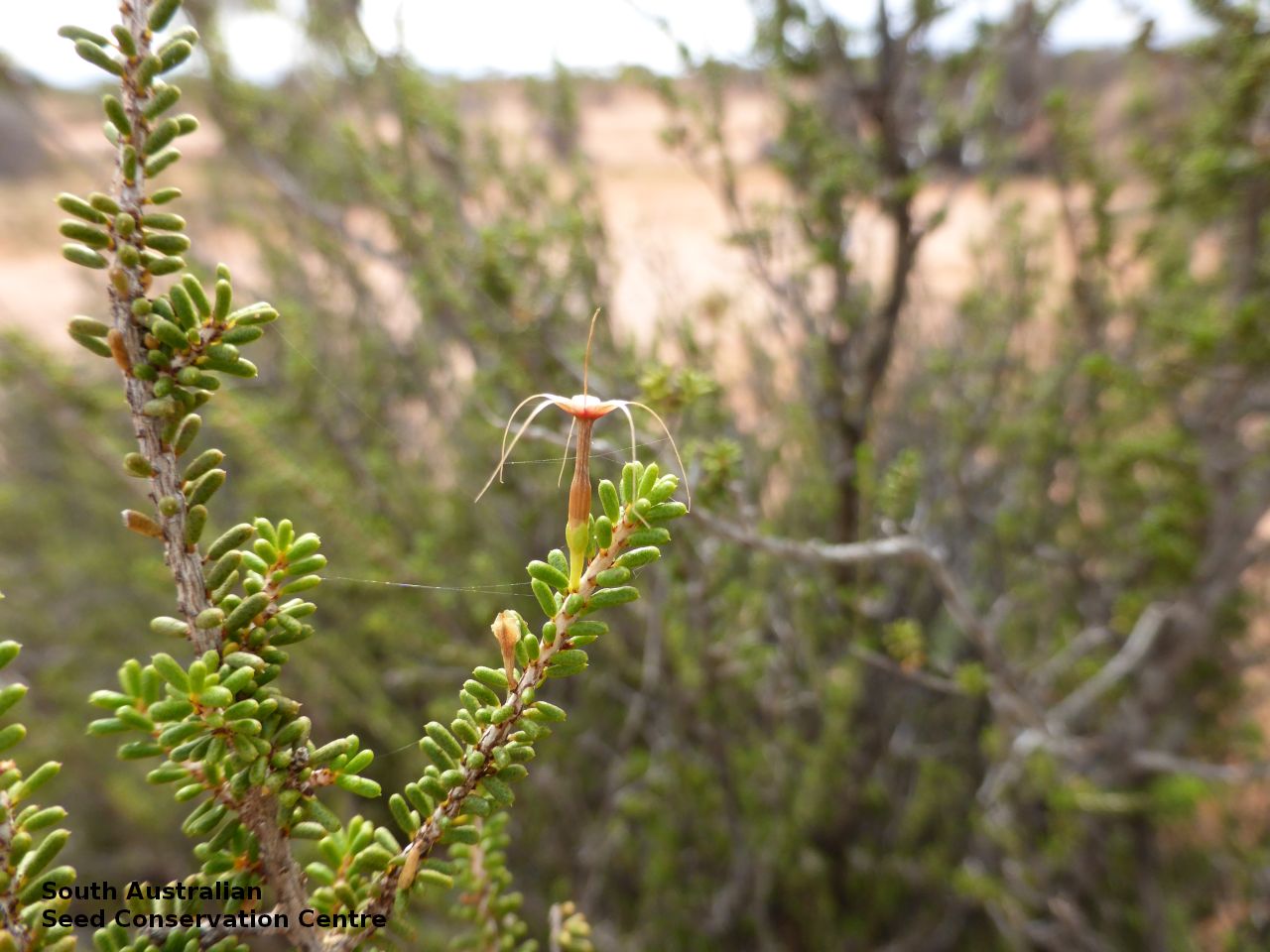
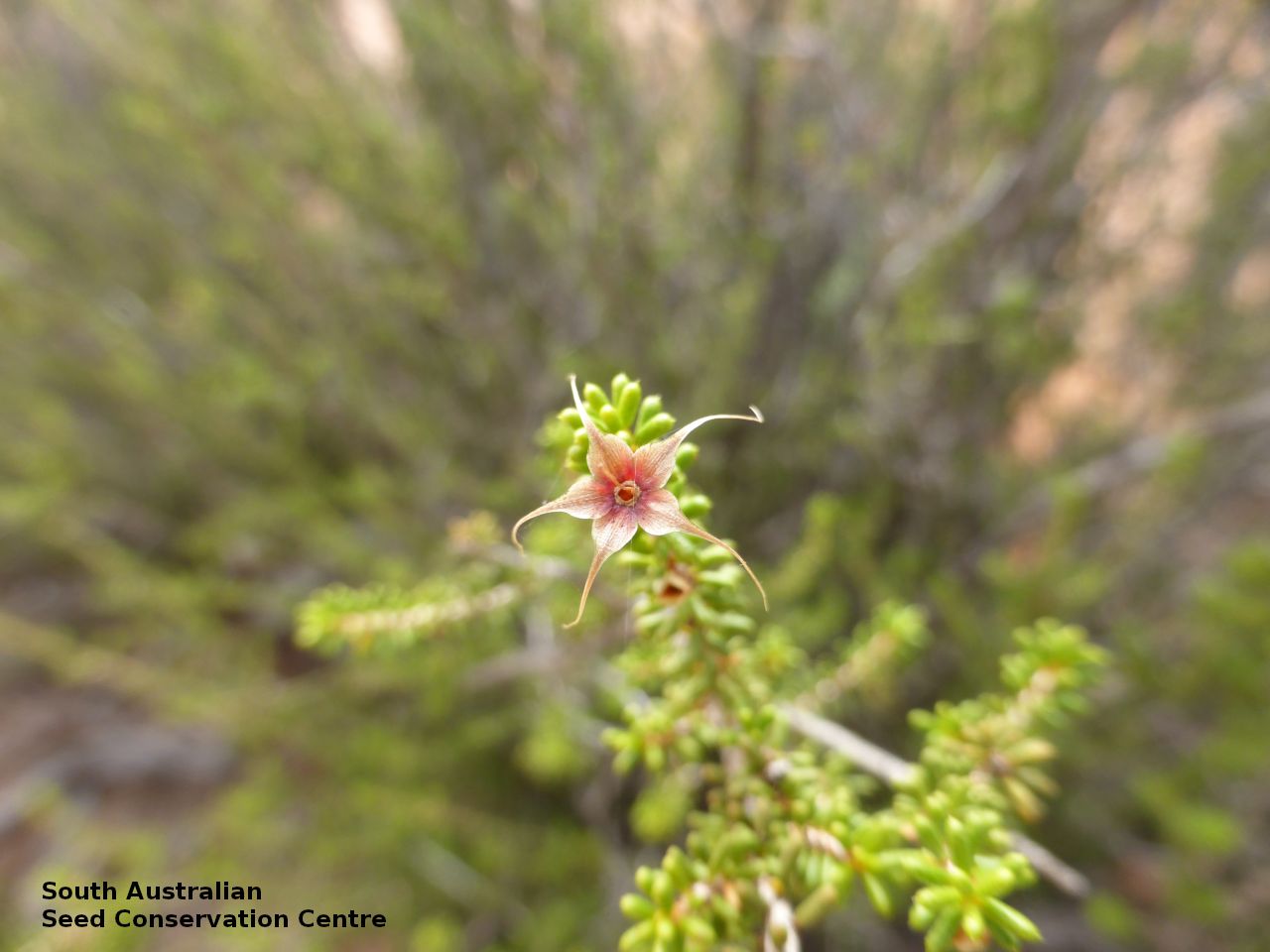
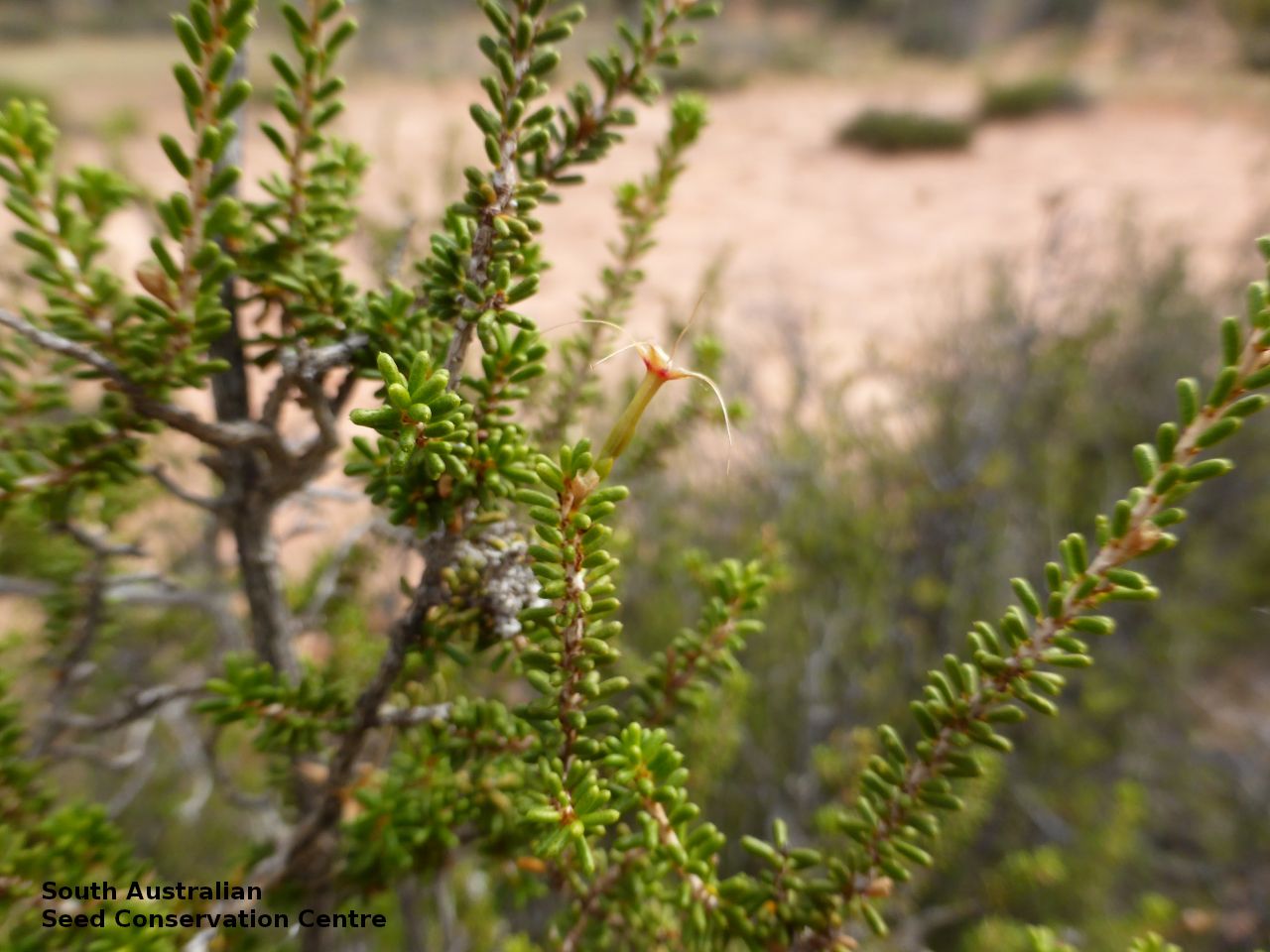
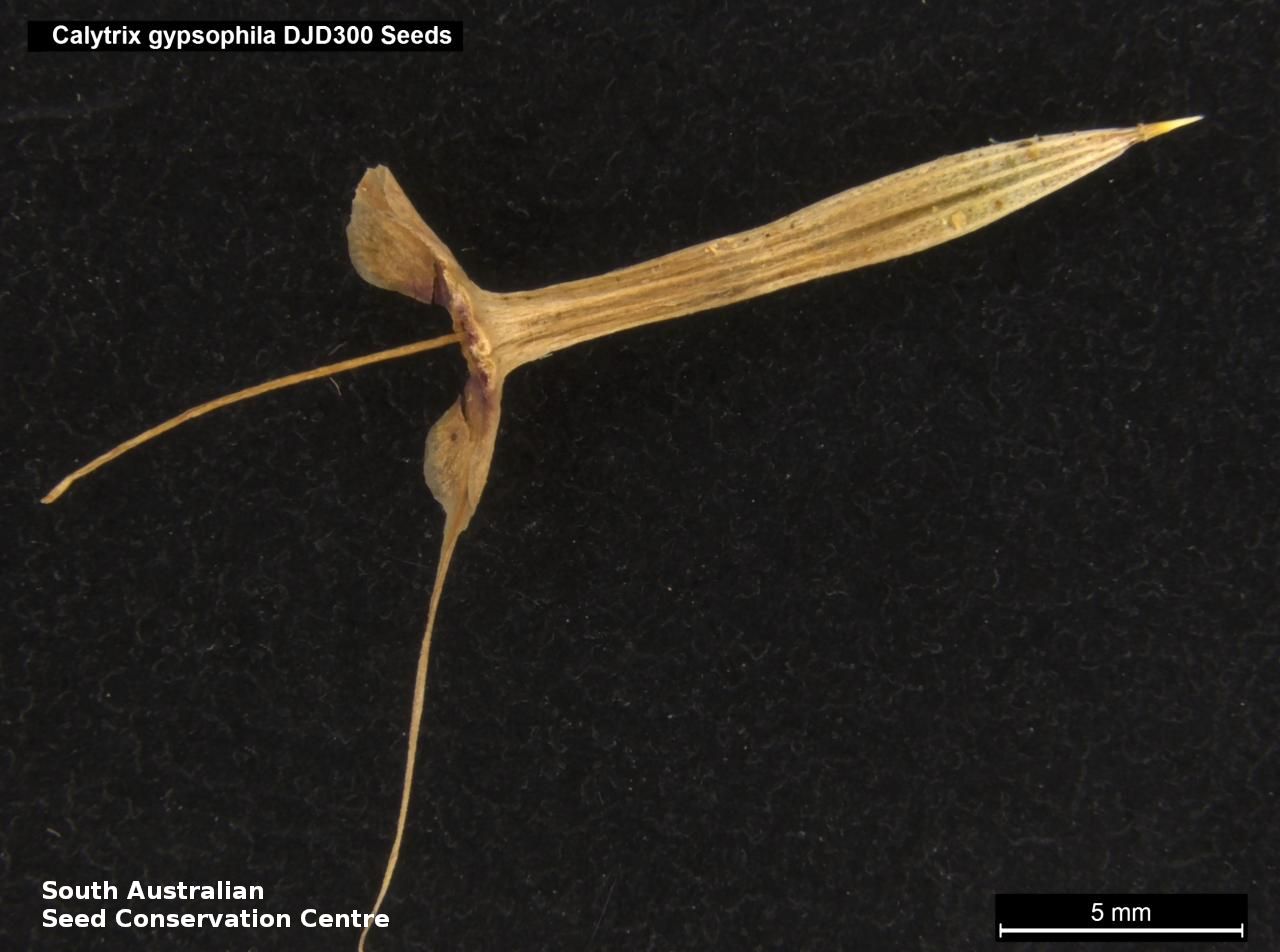
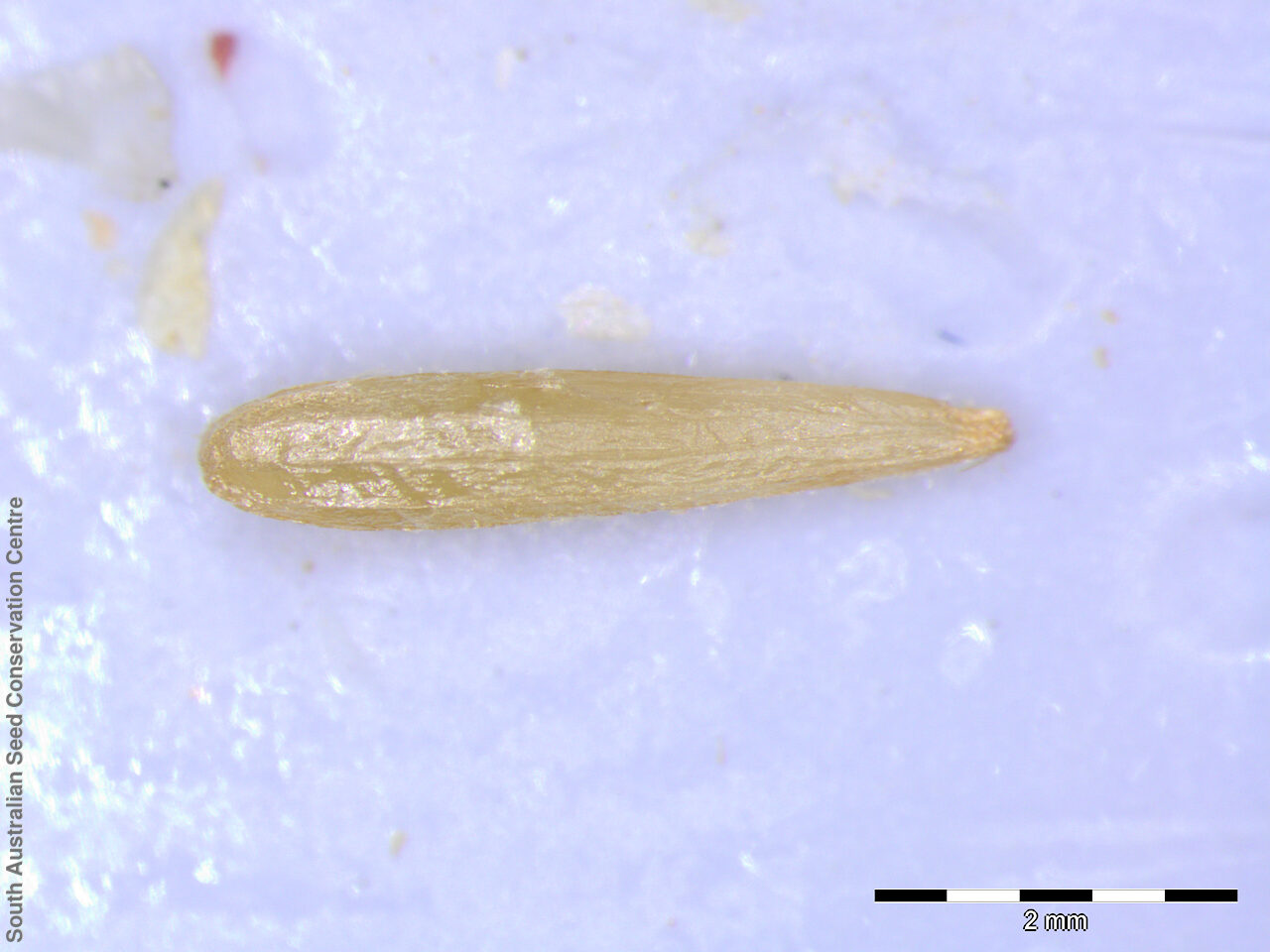

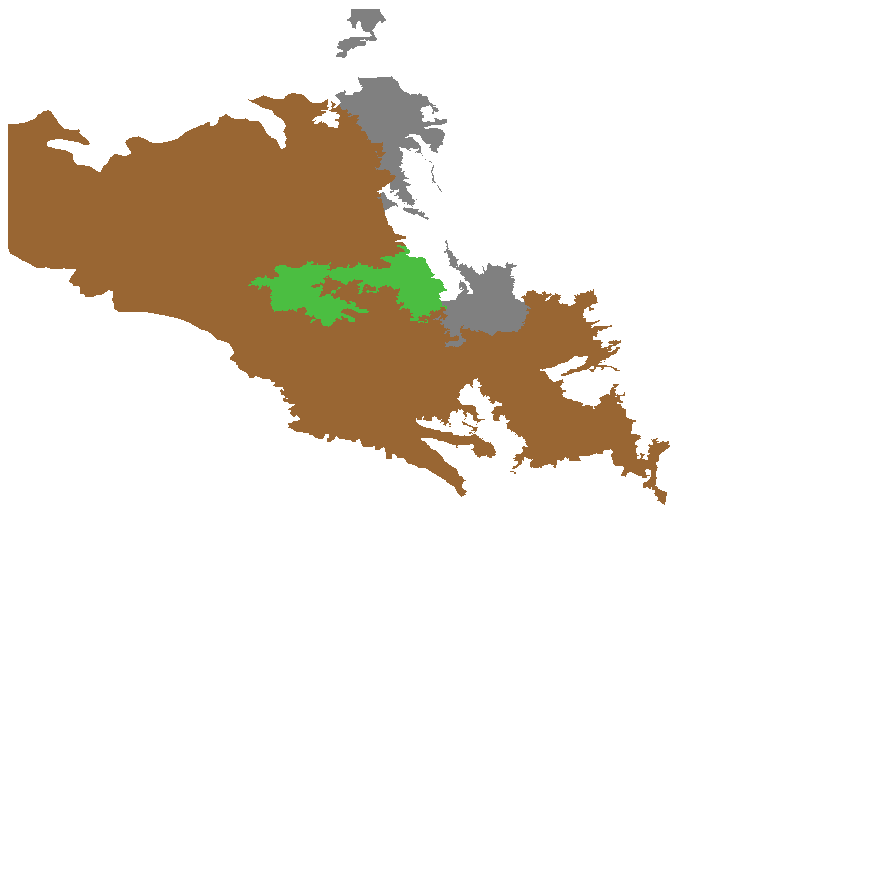
Prior names
Calytrix sp. C
Etymology
Calytrix from the Greek 'kalyx' meaning calyx and 'thrix' meaning hair, referring to the awns on the sepals. Gypsophila from the Greek 'gupsos' meaning chalk or gypsum and 'philos' meaning loving, alluding to the habitat of the species on gypsum soil.
Distribution and status
Scattered in the central and western parts of South Australia growing around salt lakes & claypans and samphires flats on gypseous and loamy sand. Also found in Western Australia. Native. Uncommon in South Australia. Rare in Western Australia.
Herbarium regions: North Western, Nullarbor, Gairdner-Torrens, Eyre Peninsula
NRM regions: Alinytjara Wilurara, Eyre Peninsula, South Australian Arid Lands
AVH map: SA distribution map (external link)
Plant description
Shrub to 2 m high with white flowers. Flowering between July and September. May respond opportunistically to rainfall. Fruits are long cylindrical fruit to 15 mm long and 2 mm wide, with fan-shaped wings and awns at one end. Seeds are a small ovoid seed sits in the long section of the fruit. Seed embryo type is spatulate fully developed.
Seed collection and propagation
Collect seeds between November and January. Collect heads by hand when they are brown and slightly fat at the base. This should contain small hard seed. No cleaning is required if only the fruits were collected. If collected with other material, use a sieve to separate the unwanted material. Store the seeds with a desiccant such as dried silica beads or dry rice, in an air tight container in a cool and dry place. Seed set and seed viability can be low. From one collection, the seed viability was low, at 20%.
| Location | No. of seeds (weight grams) | Number of plants | Date collected | Collection number Collection location | Date stored | % Viability | Storage temperature |
|---|---|---|---|---|---|---|---|
| BGA MSB | 3,100 (8.33 g) 3,100 (8.33 g) | 50+ | 4-Dec-2005 | DJD300 Gairdner-Torrens | 7-Aug-2006 | 20% | -18°C |
Number of plants: This is the number of plants from which the seeds were collected.
Collection location: The Herbarium of South Australia's region name.
% Viability: Percentage of filled healthy seeds determined by a cut test or x-ray.